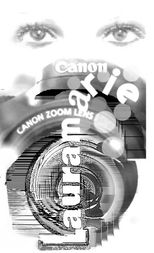Humanitarian Photo-shop
- Lauramarie Pepsin

- Apr 19, 2019
- 3 min read
Updated: Mar 28
I was once a pioneer in the one hour photo processing industry. One of the first. I was Noritsu trained. I arrived there with the basic college education, art ,communications , photography. I learned to read a densitometer. I learned how to read film. I learned how to read photos. I learned how to mix chemistry. I had great men who uh worked dark rooms, and had experience selling cameras , who taught me quite a bit. When I think of making a text book perfect photo, I think of them. They taught me some basics that I'll never forget. That was an education. I learned how to post process photos long before there was digital post processing , long before there was internet ,long before people had laptop computers, home computers, long before there was such a thing as photo shop. We did it with chemistry. We did it with densitometer readings and we did it with paint brushes and chemicals and a lot of copy negatives ,a lot of copy negatives. My greatest challenge was making photos look like what the customer thought they remembered they had seen versus what they actually shot. What an education learning how to make it look like something that was only in somebody's memory and we did it and we did it well. We went on to train a new generation of photo processors as well. I don't know where they are today. I hope they pursued photography careers .
I burned the midnight oil for weeks maybe months . I took the Noritsu photo lab management course with my boss. We were setting up the shop getting everything working getting everything processing to perfection so that our customers photos would be the most pleasing results they could imagine. Of course we still had the old time envelopes to send out to Kodak for special stuff but we tried to do some specialty stuff ourselves as well. Being an expert at color balancing and color correction we learned a thing or two about color reality. I had a customer who was a kosher inspector. His job was to find blood blood blood where it didn't belong on kosher foods and to get accurate pictures of it. Those photos had to be very accurate in color. I had a customer with a preemie ,a baby in an incubator for months' and the photos had to be accurate for legal purposes. Accuracy, I learned accuracy from real life situations and I take that knowledge and education with me today into the photo shop.
I had to learn to be a visionary in a whole new way. I had to see other people's visions other people's memories. They remembered the sunset being pink not peach not yellow. They remember the mountains being green. They remember the flowers being more purple. How to make something look like a memory in somebody's head when the film does not depict what they think they remember.
In my art education, as a visionary , I learned how to shoot. How to shoot what I wanted to see, how to shoot in a way to achieve the result that I envisioned. Skills I learned from a great mentor & teacher who worked for New York Cue magazine.
I ofttimes drew and painted those photos in school. Today I use photo-shop to create visions of what I want to see versus what was really there because when I looked through a camera viewfinder I had a vision beyond the scene that stood before me, beyond the visible light spectrum , a vision of light and shadow that didn't happen, and a realization of how to make it happen in a photo.
Then there was the old rivalry Fuji verses Kodak one film known to be more magenta & one film known to be more cool .How do you tell a customer you're shooting a film that has a tendency to be off color. I know how to balance it ,I’ll fix it for you but that's not what you shot. Hello, that's not what you shot .You didn't shoot what you think you saw and you didn't shoot what you remember but I can make it that way for you.
All over the northeast are people who have in their possession, photos that I made for them, because they never shot what they thought they shot.
I made it for them.
It was a humanitarian effort for sure.





